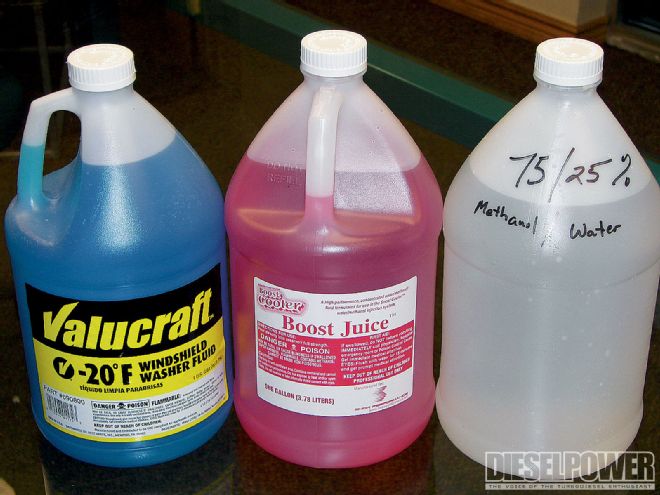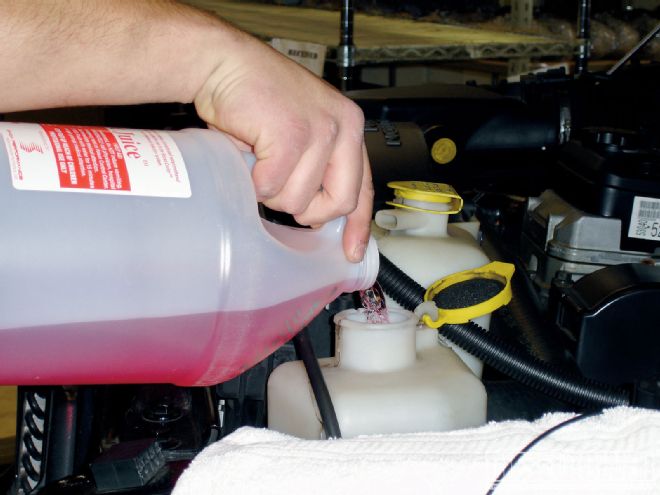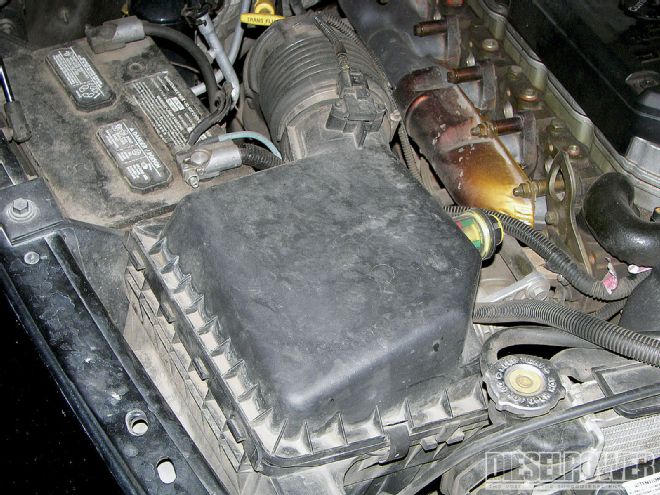Most diesel owners have come to appreciate the benefits of the various forms of aftermarket upgrades offered to improve the power output of their diesel engines. Not many gas owners can bolt on a simple programmer, fueler, or water-methanol injection kit and add the kind of performance gains offered for the average diesel combination. The reason for this is that diesel engines respond to just about any type of fuel augmentation, which in turn adds power. Sounds simple, right?

| A common-rail Dodge was strapped to the dyno to see exactly how much more power a diesel can make with water-methanol injection.
As always, there are limitations to how much power can be added to any given combination of load and/or engine speed. Not only is there a limit to the amount of total fuel and power that can be added, but the gains diminish greatly if the required fuel is not introduced at the correct time relative to the piston position. Since the diesel engine is ignited through compression, it is the timing of the injection and subsequent ignition and flame front propagation sequence that determines the efficiency and eventual power output. If ignition takes place too early, the expanding gases will work against the upward travel of the piston and damage the engine. If, on the other hand, ignition occurs too late, the result will be the expanding gases chasing the rapidly downward moving piston. The benefits of the expansion will be greatly diminished, as will the engine's power.
Now that we understand there is much more to adding power to a typical diesel application, we can take a look at testing performed on an '04 Dodge Cummins turbodiesel. The benefits of adding a water-methanol injection kit are well documented. The two-tiered approach to additional performance includes a much-needed safety margin not offered in other forms of (fuel-enhanced) power augmentation. Additional power is supplied by the introduction of extra fuel in the form of methanol, while the water portion of the equation prevents pre-ignition of the methanol and offers cooling properties that reduce the combustion temperature.
The one problem with power augmentation from adding fuel only is that the exhaust gas temperature can skyrocket. Obviously, this has an adverse effect on engine and component longevity. By combining the benefits of the power gains from the methanol with the safety features offered by the water, water-methanol injection can be a step above the usual power-adder. Now the question is: What happens when you alter the percentage of methanol mixture, and what is the effect on the previously discussed injection timing?

| The '04 Dodge 3500 was upgraded with a Stage 2 Boost Cooler kit from Snow Performance.
To illustrate the power gains offered by the different concentrations of water-methanol, we ran the '04 Dodge 3500 with the Snow Performance Boost Cooler using mixtures of 32, 50, and 75 percent methanol. The Dodge was also equipped with an Edge EZ performance box, which was set to Level 4. Prior to testing the different water-methanol concentrations, the motor was run stock with the gains offered by just the Edge programmer. In stock trim, the '04 produced peak numbers of 279 hp and 580 lb-ft of torque on a Dyno Dynamics chassis dyno.
Equipped with the Edge EZ, the numbers jumped to 379 hp and 766 lb-ft of torque. Adding the Stage 2 Boost Cooler water-methanol injection system from Snow Performance with off-the-shelf windshield washer fluid (commonly used by water-methanol owners), the peak power numbers jumped to 429 hp and 873 lb-ft of torque. For testing, the Boost Cooler was equipped with 375 and 625 ml/min nozzles with the pump set at 150 psi. The HD digital variable controller was set at 20-psi onset and 30-psi full, meaning 30 percent of the maximum quantity was injected once the system activated and the injection gradually ramped up to 100 percent once the boost pressure reached 30 psi. This tuning strategy minimized (power-robbing) combustion quench at lower boost levels and provided maximum cooling and power at higher levels.

| For testing purposes, the truck was equipped with both 375 ml/min nozzles and 625 ml/min versions.
Once we were satisfied with the repeatable power numbers using the windshield washer fluid (32 percent methanol), we stepped the mixture percentage up to 50 percent using Snow Performance Boost Juice. Increasing the percentage of methanol increased the power output once again to 453 hp and 930 lb-ft of torque. The final test was to further increase the methanol percentage to 75 percent, where the power output of the '04 Cummins turbodiesel topped out at 487 hp and 960 lb-ft of torque. From these results, it is obvious that the diesel motor responded well to the increase in methanol.
So if this is the case, why not run 100 percent methanol? First of all, methanol is extremely flammable, so safety is a concern. Also, too much pure methanol injected can create nasty backfires through the intake, so it's best to stay at a 50/50 mix, or 75 percent if you're willing to take the risk. It's the optimized controls of the Boost Cooler system (ramp rates, pressure activation) that make this percentage of methanol injection even possible, and with peak gains of 74 hp and 164 lb-ft at a safe 50/50 mix, the potential of this sophisticated system is proven.
DYNO RESULTS: '04 CUMMINS
EFFECT OF WATER-METHANOL
CONCENTRATIONS
RWHP
TORQUE
Stock
279 hp
580 lb-ft
Baseline (with Edge EZ)
379 hp
766 lb-ft
Windshield washer fluid
429 hp
873 lb-ft
50 percent methanol
453 hp
930 lb-ft
75 percent methanol
487 hp
960 lb-ft


